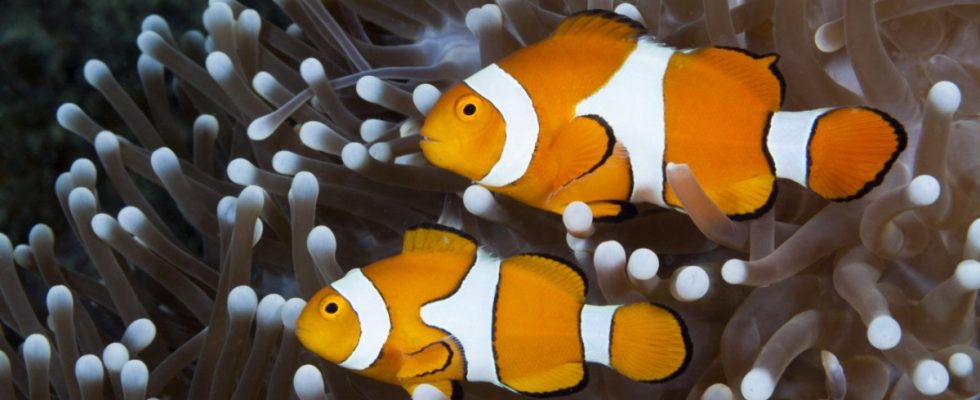Many animals have some kind of basic mathematical understanding. Turtles, for example, can calculate their energy balance and even take into account how much energy they use to get to their feeding place. Dogs seem to follow the rules of differential calculus when they do not swim directly after a ball that is thrown into the water at an angle from the bank, but first run a little along the bank in order to jump into the water at exactly the point from which they reach the ball fastest. And orangutans can add and subtract at least small amounts.
Clownfish of this species probably also belong to the club of mathematically gifted animals Amphiprion ocellaris. The bright orange colored fish, which are only a few centimeters long and have the characteristic white horizontal stripes, can apparently count up to threereports a team led by Kina Hayashi from the Japanese Okinawa Institute of Science and Technology in Journal of Experimental Biology.
The clownfish species that was the model for the main character in the animated film “Finding Nemo!” was, lives in sea anemones just like in the film. The nettles of the flower animals protect the fish from enemies. Conspecifics that approach a clownfish’s accommodation are violently attacked to make it clear that the anemone is occupied and lodgers are unwelcome.
Among clownfish, females are in charge
It is usually the so-called alpha female – female animals are in charge among clownfish – who launches the attack and bites away the unwanted intruder. Other fish species that come with peaceful intentions and pose no threat to the anemone or its inhabitants are warmly welcomed and even invited to the sea anemone house.
Kina Hayashi therefore asked herself how clownfish recognize whether an unknown fish belongs to their own species or to another species. To find out, the researchers bred clownfish in the laboratory. At the age of six months, the animals, who had never seen other species of fish in their lives, were confronted with different species of anemonefish: the Clark’s anemonefish (Amphiprion clarkii) for example, which – unlike the little Nemos – only has two white horizontal stripes or with Amphiprion sandaracinos, the orange-colored white-backed anemonefish, which has no horizontal stripes at all. The laboratory fish were also visited by clownfish of their own species.
“The clownfish reacted most aggressively to fish that had three stripes like themselves,” says Kina Hayashi, according to a press release from her institute. Compared to fish with one or two stripes, the aggressiveness was lower and species without horizontal stripes were almost not attacked at all. “This suggests that they are able to count the number of stripes to identify the species of an intruder,” says Hayashi.
To prove that it is really the number of stripes that the clownfish use as a guide, the researchers confronted the laboratory nemos with four different plastic fish that were completely similar except for the number of their stripes and either none, one, two or had three horizontal stripes. “The frequency of aggressive behavior towards the three-stripe model was the same as towards live ones A. ocellarisand it was higher than all other models,” the scientists write in their study. In other words: Nemo can count.

